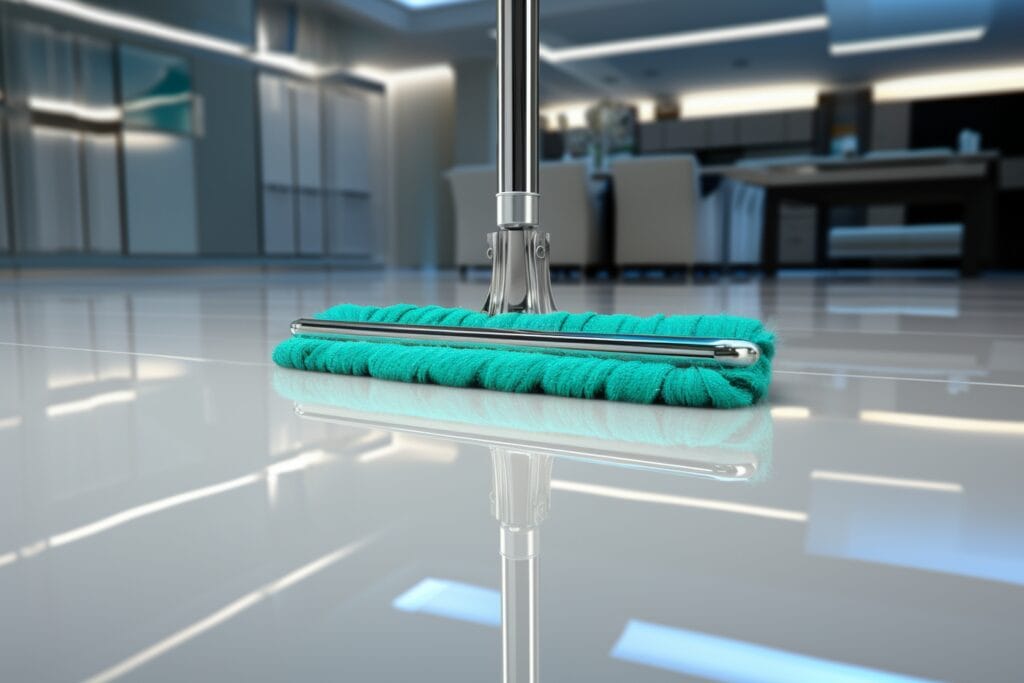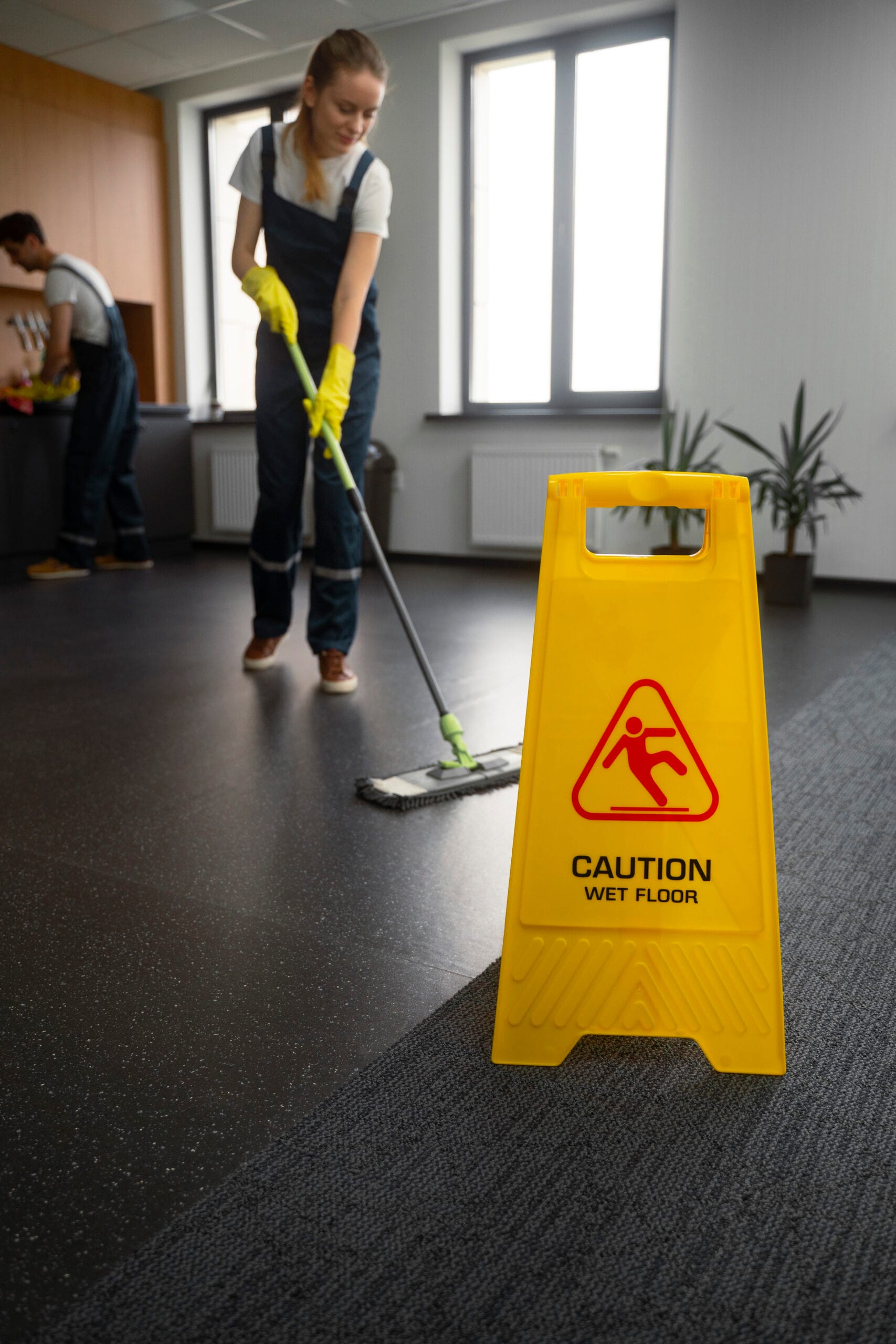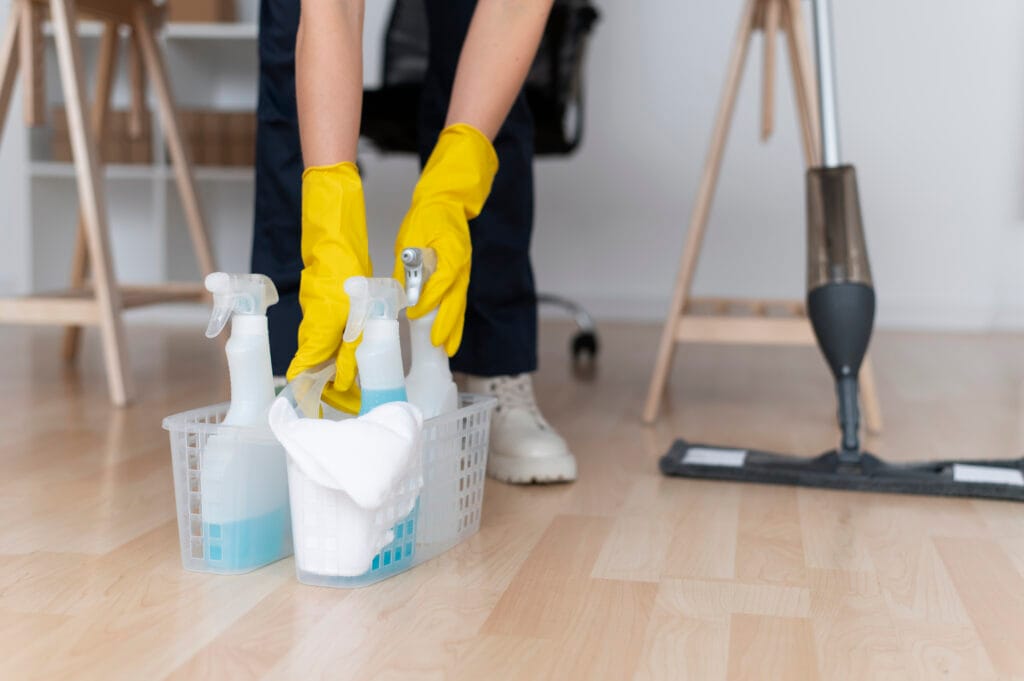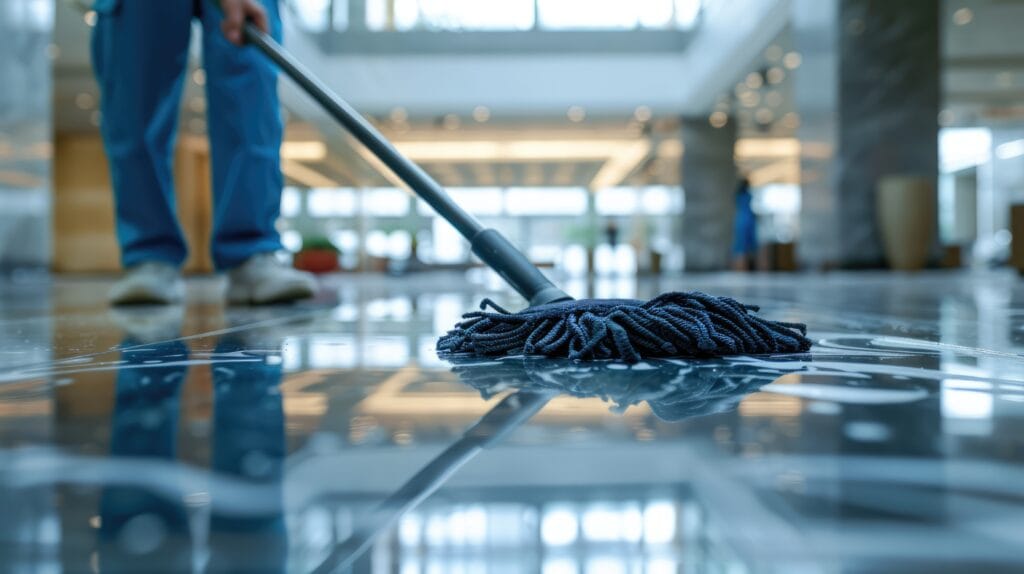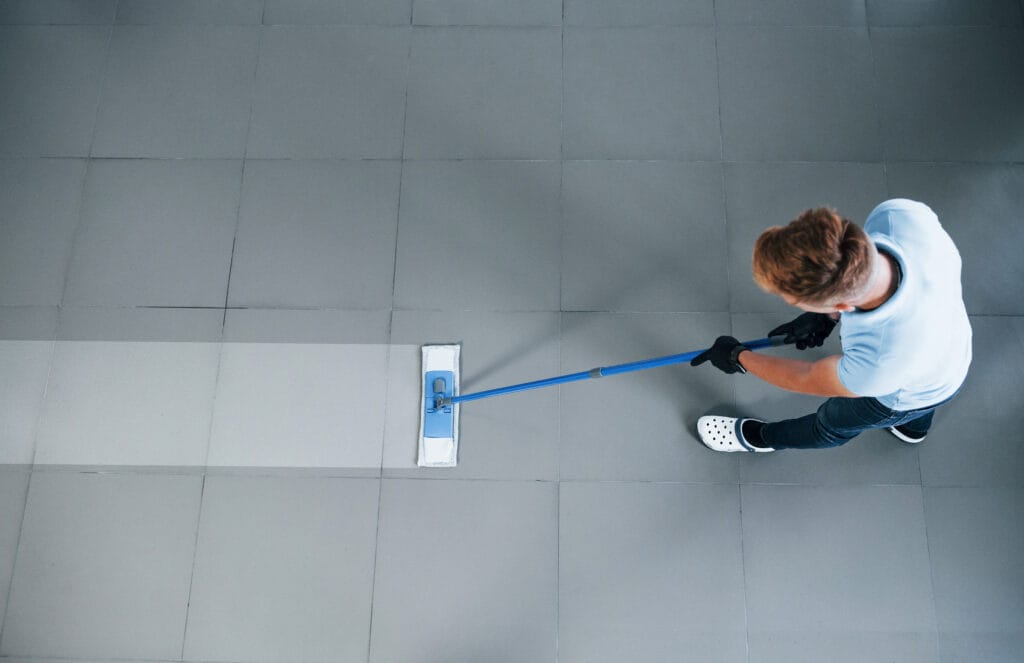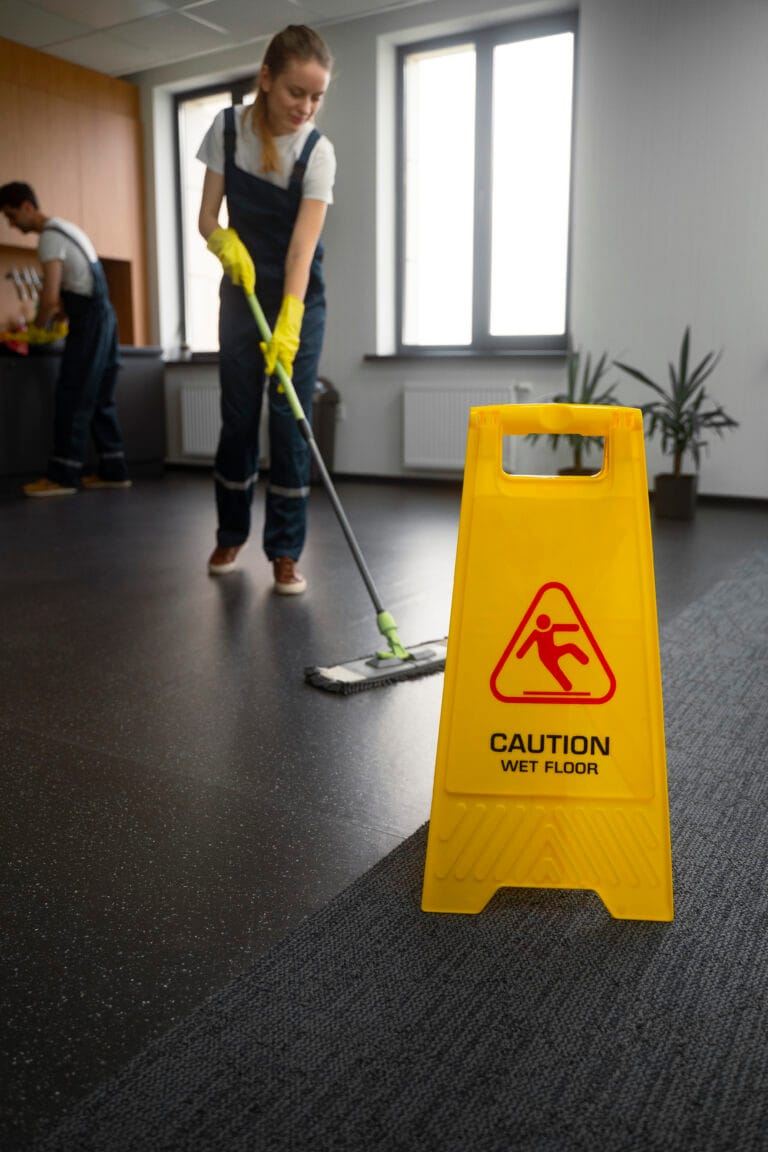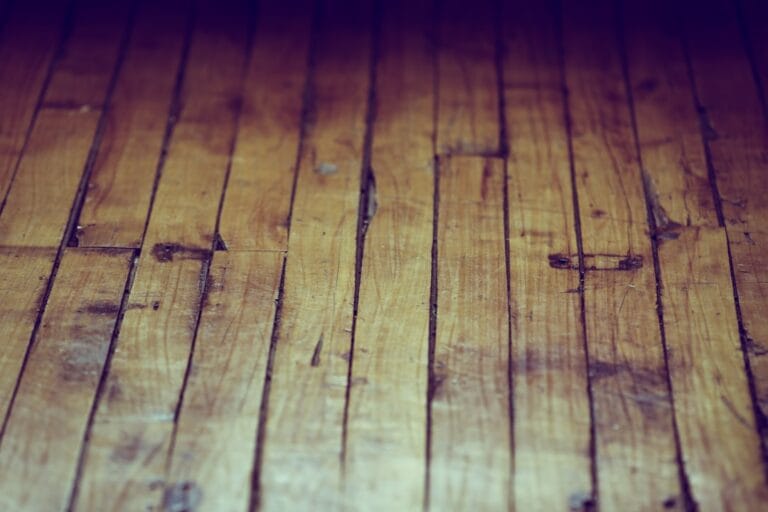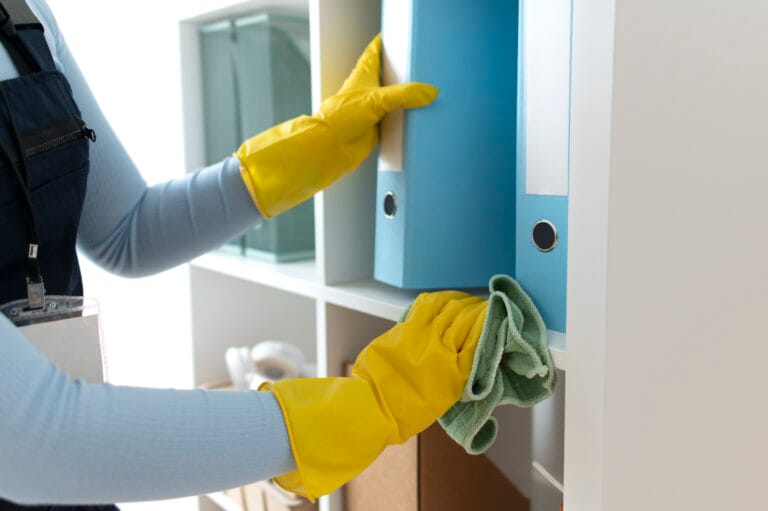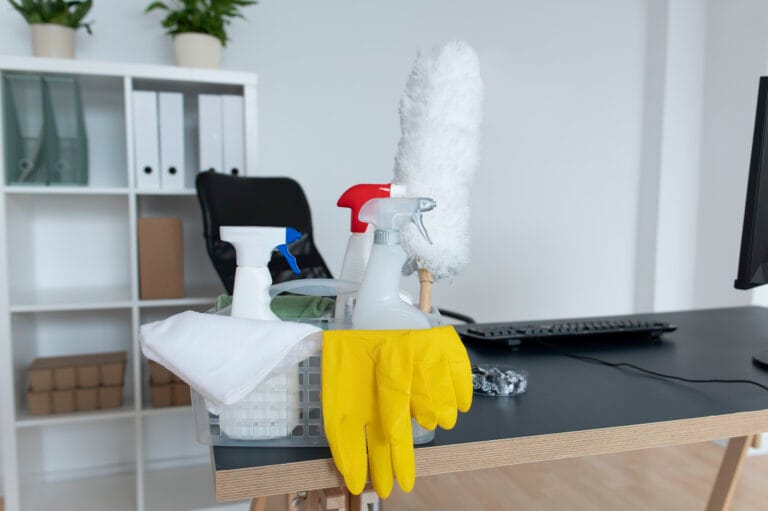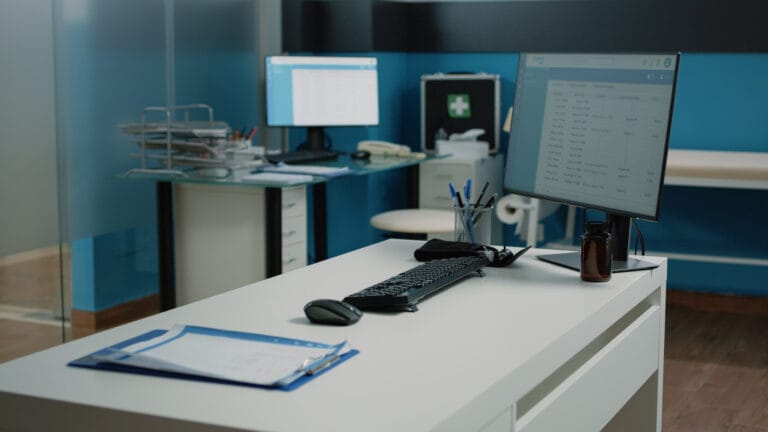Floor Care Experts: Stripping, Waxing & Polishing in Monterey
Floors shoulder the daily burden of foot traffic, rolling chairs, and changing weather. They also serve as a silent ambassador of facility quality. Dull, scuffed finishes undermine brand perception, while gleaming surfaces reflect attention to detail. In Monterey County, where ocean air accelerates wear on resilient flooring and sand infiltrates carpet fibers, professional floor maintenance is indispensable. UFG Monterey offers a comprehensive stripping, waxing, and polishing program engineered to extend flow.
Floor Types Common to Monterey Facilities
Local facilities house a wide mix of flooring: luxury vinyl tile in renovated Cannery Row offices, terrazzo lobbies in civic buildings, polished concrete in tech warehouses, and classic VCT in school corridors. Each material responds differently to chemicals, pads, and moisture. For instance, vinyl composites soften under aggressive alkali strippers, terrazzo demands pH‑neutral polishing compounds, and concrete benefits from densifier applications that fill micro‑capillaries.
Chemistry of Finish Removal
Stripping removes embedded soil and oxidized finish layers, preparing the floor for rejuvenation. Traditional strippers rely on butyl solvents and high pH that can leach plasticizer from vinyl. UFG Monterey employs modern low‑odor, rinse‑free formulas that suspend finish solids, allowing removal at lower alkalinity. The chemical dwell time is calibrated through spot testing to avoid substrate damage and minimize water consumption during rinse passes.
Equipment Selection and Pad Technology
Effective stripping and polishing hinge on choosing the correct pad aggressiveness. High‑productivity maroon pads impregnated with microscopic diamonds strip finish layers mechanically with less chemical usage. Porous melamine pads excel at tackling micro‑scratches on luxury vinyl tile without leaving swirl marks. For polishing concrete, resin‑bonded diamond pads progress through 400‑ to 1500‑grit sequences, yielding a mirror‑like sheen that resists staining. Low‑RPM swing machines provide downward torque.
Process Workflow
A disciplined workflow ensures efficiency and surface integrity:
- Pre‑inspection and coating test to identify existing finish type and thickness.
- Perimeter edging with hand‑held scrubbing tools to remove finish along baseboards and under fixtures, preventing halo lines.
- Controlled stripper application using solution‑dispensing mops to maintain even coverage without flooding.
- Agitation with weighted swing machines fitted with appropriate pads, followed by squeegee vacuum extraction.
- Neutralization rinse employing auto‑scrubbers equipped with pH‑balanced solution and high‑CFM vacuum recovery.
- Thin‑coat finish application—three to five coats of 25 percent solids polymer applied in diagonal cross‑hatch strokes to build uniform film depth.
- Optional high‑speed burnishing at 1500 RPM enhances gloss and densifies upper finish layers.
Safety and Environmental Considerations
Slippery stripper slurry poses a significant hazard. UFG Monterey blocks pedestrian routes with bilingual signage and deploys fans to accelerate drying. All waste liquids are collected in wet vacuums with built‑in filtration socks to capture finish solids before disposal in accordance with Monterey Regional Waste Management District guidelines. Low‑odor products protect occupants from VOC exposure. Battery‑powered burnishers emit no carbon monoxide, allowing work in enclosed corridors without ventilation.
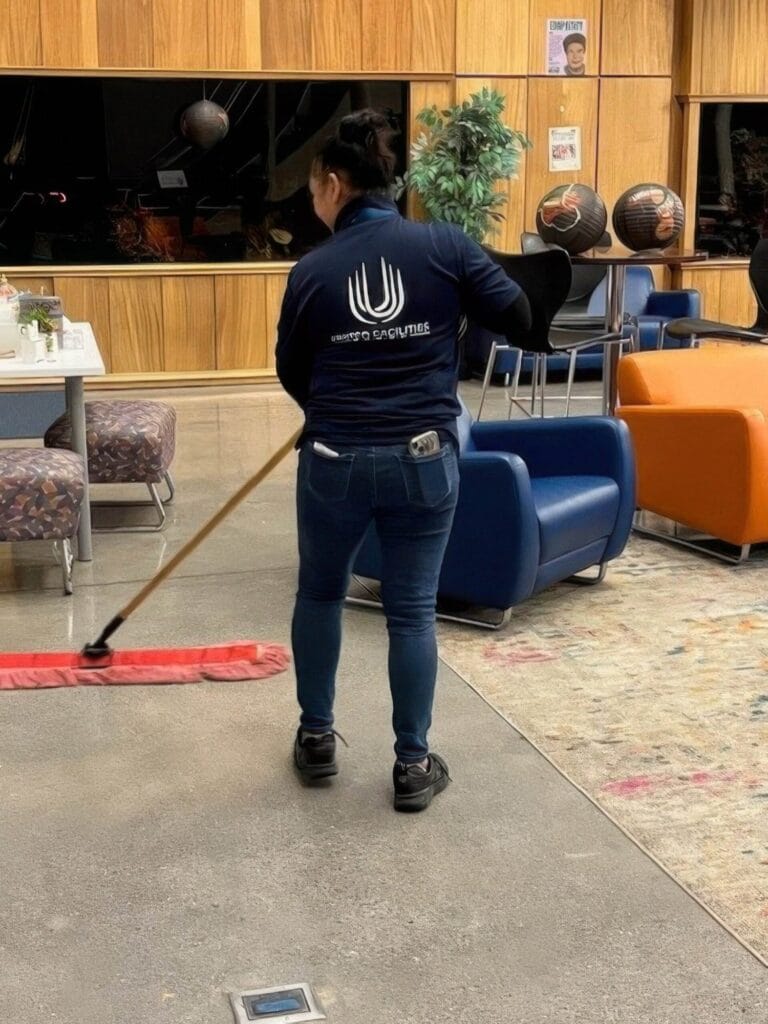
Preventive Maintenance and Life‑Cycle Cost Savings
After initial restoration, daily microfiber dust mopping and scheduled spray‑buff cycles prolong finish life. UFG Monterey works with facility managers to establish a “traffic‑lane approach,” protecting busy corridors with an extra coat of finish while applying fewer layers to low‑use zones, balancing materials cost with performance. Quarterly burnishing realigns polymer molecules, tightening the film and enhancing durability. Over five‑year projections, clients save up to 40 percent on total floor spend.
Frequency Planning
Climate and traffic dictate service intervals. Coastal sites with open‑door retail areas may require quarterly scrub‑and‑re‑coat, while interior office space can extend to biannual cycles. School gyms scheduled for seasonal sports benefit from summer stripping to avoid slip risk during classes. UFG Monterey tracks finish wear using gloss meters and friction testers to determine optimal timing rather than arbitrary calendars.
Measurable Outcomes
Quality assurance relies on quantifiable metrics: gloss level measured in gloss units at 60‑degree angle, coefficient of friction testing to verify slip resistance, and adhesion pull tests on newly waxed VCT. Inspection data feed into the client portal, generating trend lines that inform budget forecasting and maintenance planning.
Implementation and Project Management
Large‑scale floor restoration unfolds over a detailed Gantt chart. Furniture lift systems raise cubicle pods without disassembly, saving labor costs and preventing damage. Technicians stage supplies in sequenced zones to minimize chemical odors and workflow disruption. The project manager conducts safety briefings, confirming personal protective equipment compliance and evacuation routes. Once complete, a walk‑through with the client verifies drip‑free baseboards, uniform gloss, and properly re‑set furniture.
Professional stripping, waxing, and polishing transform worn floors into high‑gloss assets that uplift Monterey facilities. Through precise chemistry, advanced pad technology, and data‑driven maintenance schedules, UFG Monterey prolongs floor life and curbs long‑term expenditures. The result is a safe, attractive, and durable surface that reflects positively on every organization—from seafront hospitality venues to inland manufacturing floors—demonstrating that the path to lasting impressions begins right.
